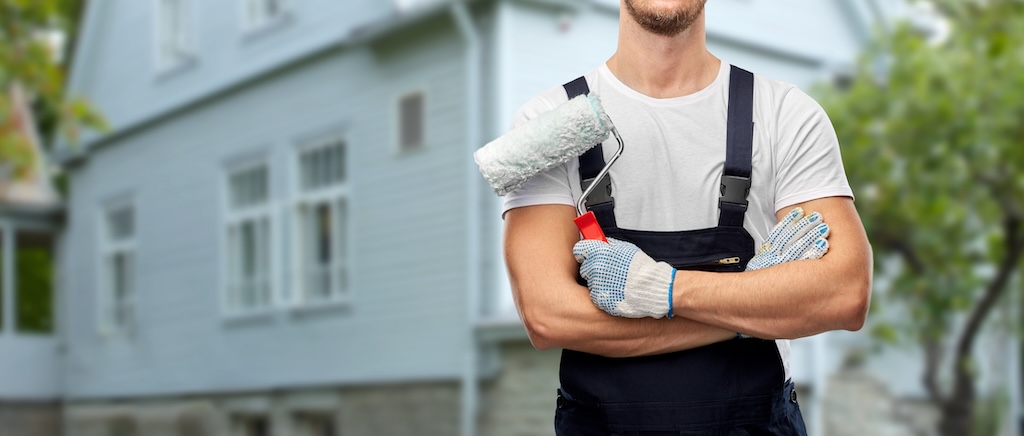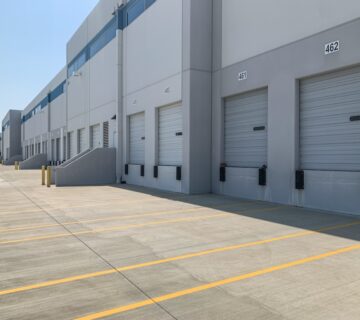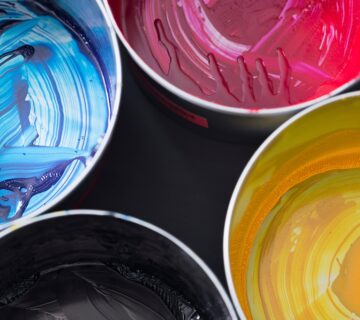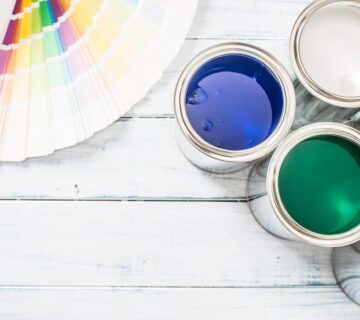When it comes to house painting, the technique used can significantly impact the quality, speed, and finish of the job. The most common methods include using a brush, roller, or spray. Each of these techniques has its strengths and ideal applications, and understanding the differences is key to achieving the best results for your painting project. In this blog, we’ll explore these three popular house painting techniques to help you determine which is the best fit for your project. It’s also important to consider factors such as the type of paint being used and the painter’s level of experience.
Brush Painting
Precision and Detail
Brush painting is one of the most traditional methods. It offers excellent control, making it perfect for detailed work such as trims, corners, and small areas. Brushes come in various sizes and bristle types, allowing for precision and attention to detail. In addition, brush painting does not require extensive setup or additional equipment, making it a convenient option for quick touch-ups or smaller projects.
Texture and Thickness
Using a brush can also give you more texture, as the brush strokes leave a slight imprint on the paint. This can be desirable in certain styles of homes or with specific paint types. However, it’s important to be consistent with your brush strokes to avoid an uneven finish. Mastery of brush techniques can lead to a personalized touch that sets your work apart.
Ideal for Certain Surfaces
Brush painting is particularly effective on surfaces that are not perfectly smooth, such as textured walls or exterior siding. The bristles can get into crevices and ensure even coverage in ways that rollers and sprays may not. Plus, brush painting allows for better control around obstacles and fixtures.
Roller Painting
Efficiency and Coverage
Roller painting is preferred for painting large, flat surfaces quickly and efficiently. A roller can cover a much larger area than a brush in a single stroke, making it ideal for walls and ceilings. It is also more ergonomically friendly for the painter, allowing for the painting of wide swathes without the fatigue that can come from detailed brushwork.
Smooth Finish
Rollers typically give a more uniform, smooth finish than brushes. They’re available in different nap lengths, which are the fibers on the roller. A shorter nap creates a smoother finish, while a longer nap is better for textured surfaces. For an extra smooth finish, some painters will lightly sand between coats when using a roller.
Less Control
While rollers are great for covering large areas, they offer less control than brushes. It can be challenging to use a roller in small or tight spaces without getting paint on unwanted areas. When precision is required, a combination of both rollers for the broad surfaces and brushes for the details often yields the best results.
Spray Painting
Speed and Uniformity
Spray painting is the fastest method among the three. It’s ideal for covering large areas or for painting complex surfaces like shutters and fences. A sprayer can evenly coat a surface much quicker than a brush or roller. This technique is particularly valuable when time constraints are a consideration, or when dealing with vast areas.
Smooth, Professional Finish
Spray painting often results in a very smooth, even finish that is free of brush or roller marks. This can give your home a professional-looking finish if done correctly. However, achieving such a finish requires a careful and practiced application to prevent drips and overspray.
Skill and Preparation
Spray painting requires more skill and preparation than brush or roller painting. Overspray can be an issue, so surrounding areas need to be thoroughly covered. It also requires more equipment, such as the sprayer and protective gear. In addition, there is a learning curve associated with spray painting, as it requires a steady hand and an understanding of how to maintain a consistent spray pattern.
Final Thoughts
Choosing the right painting technique depends on the specific needs of your project. Brush painting is great for detail and textured surfaces, roller painting for efficiency and smooth finishes on large flat areas, and spray painting for speed and a professional finish on complex surfaces. Often, a combination of these methods is used to achieve the best results. Whichever method you choose, proper preparation, and quality materials are key to a successful paint job. For more tips and advice on house painting, visit our website at sisupainting.comand check out our blog at sisupainting.com/blog.





No comment